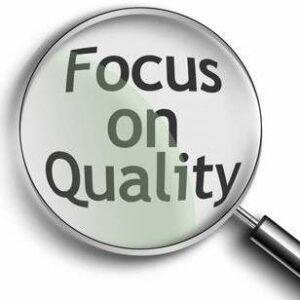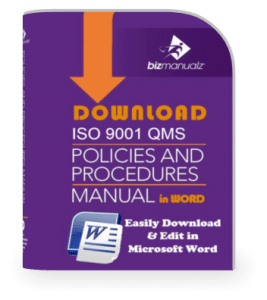Why Implement the ISO 9001 Standard?

Implementing an ISO 9001 Quality Management System can help your business. Two important topics covered so far were how it can actually help you streamline and simplify your document system (as opposed to the common misconception that ISO 9001 is a “document nightmare”).
Why Implement ISO 9001 Standards?
The ISO 9001 Standard can make your organization more competitive though a system of well-defined processes, by clearly capturing customer requirements, and an understood and regularly evaluated supply chain. Another important advantage of implementing the ISO 9001 Standard is improved organizational culture.
Faithfully employing the standard can actually change how people feel and behave in the organization, and how its members interact with peers, subordinates, and superiors.
Fact-Based Decision Making
Informed decision making is a key facet of the ISO 9001 Standard. Its emphasis on system and processes, objectives, record-keeping, and measurement means that information is clearly understood and shared throughout the organization; there is no perception that it is horded by a small group of decision makers. Since important information is part of regular process and management reviews, then everyone can see how it is used in decision making.
It is not uncommon for organizational members to feel that management does make the effort to collect all the key information prior to making a decision. Poor decisions lead to wasted efforts, reworking and backtracking, and worst of all, frustrated and demoralized employees.
If important information is collected while executing processes, determining customer requirements, etc…, and team members are aware of the information and how it is used in the decision making process. Such an approach does wonders to gain buy-in and support of those who have to execute the decision.
Management that is long on blame and finger-pointing but short on objective facts is demoralizing to the staff. If implementing ISO 9001 can contribute to management by facts then improvement to the organizational culture is inevitable. The ISO Standard calls for clear record keeping based on stated objectives; it also calls for decisions to be made based on that information.
If an organization is properly implementing ISO 9001, then objectives are established that align with organizational priorities. Then as processes are executed data is collected (recall the emphasis on records) and shared (i.e. performance scoreboards) that clearly communicates performance relative to these objectives.
Now there is no guessing about performance; it is established in black and white (or red and green) and accessible to everyone. Careful review of performance, including history, trends, connection between performance and events, can lead to improvement.
 Establishing Quality Objectives
Establishing Quality Objectives
As noted above, a facet of the ISO 9001 Standard is clearly stated quality objectives that should be based on an established vision and mission. A recognized and acknowledged organizational direction with aligned, clearly defined, and communicated quality objectives lets organizational members know where the organization is headed and why.
Looming doubts about organizational direction creates confusion and frustration; especially if the perception is that the direction is shifting or changing every other week.
A long term, stable strategy and direction is not only key for an organization to be successful – it is also key for the members to perceive that the organization has a consistent and committed course. Uncertainty creates fear. A better approach is for them to clearly understand their role and their place in the organization as it fulfills its mission and objectives.
Participative Management
Finally, most people agree that the biggest influence on organizational culture is management behavior. Not what management says, but what management does. Frequently members of an organization feel detached from management. Too often management is not very involved, or even aware of, the issues that the members of the organization face and overcome on a daily basis to make the organization function.
Management Involvement
Management involvement is a fundamental tenet of the ISO 9001 Standard. Management has to be directly involved in creating the Quality Management System and in maintaining it. This includes regular management reviews that require management participation in organizational activities and resolving organizational issues. That kind of involvement by management produces positive results in several ways, including the perception that management cares about what members are doing at all levels of the organization.
Management Data
Another important aspect of the ISO 9001 Standard is management data. All the records that collect data concerning performance will not be useful if management does not show they care about the data, and if they do not actively engage in using data for improvement. However, if management is actively perusing the Plan-Do-Check-Act philosophy then continual improvement will be the result.
These are just some examples of the positive effects that implementing ISO 9001 can have on organizational culture. There are other ways ISO positively influences organization culture, such as an emphasis on “fixing systems and processes,” not “fixing people.” Also, an emphasis on creating clearly defined processes with clearly defined responsibilities as discussed in the previous article.
ISO 9001 Management Tool Quality Management
Clearly, the ISO 9001 Standard is not just about creating meaningless compliance rules to which organizations must adhere. The bottom line is that ISO 9001 is a management tool used to continually and incrementally improve organizations in several ways; streamlining processes and documentation, improving competitiveness, and improving how all members feel about their role in the organization. These are all important benefits that can be gained though sincere efforts to implement ISO 9001.
If you are interested in using ISO 9001 Standard to improve you business Bizmanualz can help with off-the-shelf manuals and training.
















Leave a Reply